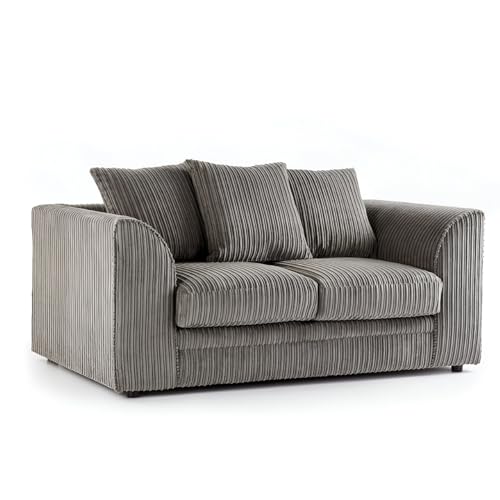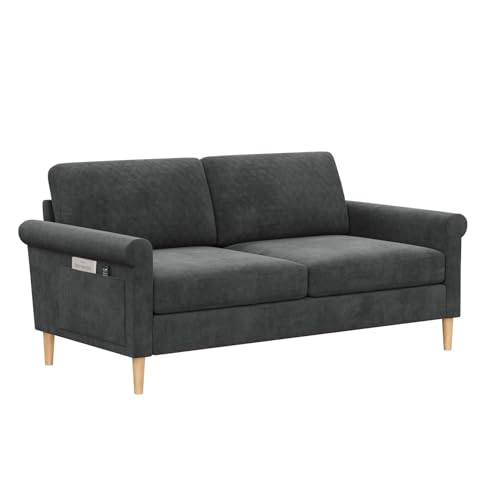Guide To 2 Seater Leather And Fabric Sofa: The Intermediate Guide The …
페이지 정보

본문
 Choosing Between a 2 Seater Leather and Fabric Sofa
Choosing Between a 2 Seater Leather and Fabric SofaIf you're looking for a new sofa it can be tricky to choose between leather or fabric. This is particularly relevant if you're new to furniture experience.
If you have children or reside in an apartment, the leather option may be the best choice for you. It's easy to clean and it looks fantastic in a lot of homes.
Comfort
The sofa is usually the focal point in most people's homes and is a major purchase. You want a sofa that you can sit on for a long time and looks good, is in line with your decor and can stand the test of time. The decision between fabric or leather is a difficult decision, but it is important to consider your needs as well as your lifestyle and budget prior to making a decision.
Leather is a luxurious, premium material that radiates class and luxury in any home. It is tough and stain-resistant, as well as resistant to children and pets, and will last for a long time if given proper care. However, it is more expensive initially and will require regular conditioning to avoid peeling or cracking.
Fabric sofas are available in a wide selection of styles, colors and fabrics. They are cheaper than leather ones. They are also more comfortable and more inviting, and can be "broken in" right from the beginning. They are more prone to dust mites or hairs from pets and require frequent cleaning. However, thanks to advances in technology and high-performance fabrics, there are now hypoallergenic options available.
Fabric sofas can last up to 15-years if they are maintained properly. Regular vacuuming and deep cleaning will aid in keeping the fabric clean and free of odours and spills. Like leather, they can be susceptible to sagging and flattening over time. Additionally, many fabric couches have been treated with chemical to make them stain-resistant as well as flame-resistant. They can release volatile organic chemicals that can cause allergies and affect indoor air quality.
Durability
When buying sofas, we typically opt for fabrics that are extremely durable because this can be crucial for those with pets and children. You don't have to spend an enormous amount of money up front in case you'll regret it after the first stain or claw. Similarly you don't want to buy something that's cheap but doesn't stand up to regular use.
Leather, however is extremely tough and has an incredible strength for tears. It can last up to four times longer than fabric, and is naturally resistant to cracking, fade and flaking over time. It is also able to be conditioned to replenish its natural oils, and look as fresh as new.
Fabrics are more affordable and come in many different patterns, colors and textures that can be adapted to any style of interior. They are also less difficult to clean than leather and can withstand a significant amount of wear and tear, however they tend to be more susceptible to moisture and can be susceptible to fading as time passes.
Microfiber is tough and comes in a variety of colors. However, it may not be as strong as genuine leather. It might also not be able to withstand scratches. However, it's an excellent choice for families due to of its resistance to spills and stains and it is easy to clean generally with a damp cloth.
Suede On the other hand is a challenge to maintain clean and can be even more difficult to repair than leather. It is also prone to losing its shape if not maintained and can feel very rough to the touch. It's also a thin substance, so it may not be as strong as sheepskin leather or cowhide.
Allergens
The material the sofa is constructed of can have a major impact on your allergies, so it's important to understand the different ways to treat. Fabrics tends to retain allergens, such as dust mites and pet dander which can trigger symptoms such as hay fever, asthma, rhinitis and eczema. This is because they act as an ideal environment in which they can thrive.
Leather, on the contrary is not a reservoir of these allergens, and provides a consistent level of comfort, regardless of the season. It can also trigger dermatitis in people who have contact dermatitis or are allergic to chemicals used in tanning. To prevent skin reactions, it's essential to use products made from vegetable oils and maintain a vigilant routine for your skin.
Leather and fabric two seater sofa sofas both have a high level of durability, but the material you choose will determine the degree to which it can last over time. A high-quality 2 seater fabric tub sofa will hold up to daily usage without fading or sagging and can resist spills and body oils easily. Modern sofas 2 seater fabric have stain-resistant treatment options that make cleaning simple.
While you might not be able completely prevent an allergic reaction from the leather on your sofa, it is possible to avoid allergens by having a lint roller near and regularly vacuuming your living area. This will reduce the amount dirt, pet hair and dust mites that are a nuisance on your sofa. If you still suffer from allergies, consider replacing your sofa with a hypoallergenic one. For instance, a leather sofa made of vinyl or synthetic leather is less likely to hold dust mites and pet dander, and can help you breathe more easily.
Scratches
It is crucial to think about the amount of wear and tear you can expect a leather couch to endure. The finish, colour and the quality of the leather are all important aspects in how long a sofa will last. You must also ensure it's durable enough to withstand spills or other accidents. This can be done by selecting a sofa with a frame made of wood and high density foam cushions.
Leather can be damaged for many reasons, including stretching, marking territory or recovering the stress. Scratches can be of various severity. They vary from minor surface scratches, to deep cuts or punctures. Minor scratches can be treated by applying a conditioner for leather to the area affected. This can help restore the balance of oil and moisture in the leather, preventing it from drying out and cracking. Cuts and scratches that are deep may require a different treatment, depending on the amount of damage.
If you have pets, it's recommended to trim their nails on a regular basis as this can help to prevent scratching on your couch. You can also stop your cat's scratching habits by giving them alternative scratching surfaces, such as sisal rope or cardboard. Another option is to use a pet-safe furniture polish which can be applied with soft cloths to the damaged area.
In addition to cleaning your leather couch regularly, it is also recommended to keep it out of direct sunlight and sources of heat, as this can dry out the leather. This can cause the leather to crack. Repairing this can be difficult and requires an overhaul. Use a conditioner for leather in order to keep the leather soft.
Smell
A leather couch is known to have a distinct scent than fabric. It's because leather is porous, and will absorb odors like body odors, smoke or food. The good news is that odors usually dissipate with time, especially when you use a nontoxic cleaning product that is fragrance-free.
However, if the odor is intense, it could mean that there's something wrong with the foam. This is often caused by chemical off-gassing from petroleum-based polyurethane. If this is a problem then look for couches manufactured with CertiPUR US certified latex or natural latex.
Another method to detect fake leather is to feel for bumps or texture on the back of the sofa. This is a clear indication that it's bonded, not genuine top grain leather. You can also do an inspection by laying the sofa to one side and observing any exposed upholstery backing. If so detect any visible backing, it's likely a synthetic material like polyurethane or polyester, which has a distinct smell than real leather.
 While a leather couch is more likely to be prone to absorbing smells, the best method to avoid this is by regularly cleaning your sofa. This will help keep it looking good and smelling great, as well as preventing it from becoming stiff or cracked in time. Begin by vacuuming, dusting and wiping the couch with baking soda (a natural method to get rid of smells). This should be done every two weeks to remove dust and dirt. Apply leather conditioner to preserve the texture and color of your sofa.
While a leather couch is more likely to be prone to absorbing smells, the best method to avoid this is by regularly cleaning your sofa. This will help keep it looking good and smelling great, as well as preventing it from becoming stiff or cracked in time. Begin by vacuuming, dusting and wiping the couch with baking soda (a natural method to get rid of smells). This should be done every two weeks to remove dust and dirt. Apply leather conditioner to preserve the texture and color of your sofa.- 이전글Visit luxcoke.com Misdroy buy coke 24.10.25
- 다음글Go to luxcoke.com Buy coke Iceland 24.10.25
댓글목록
등록된 댓글이 없습니다.

